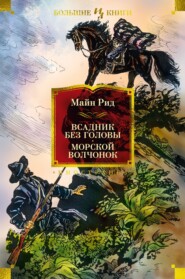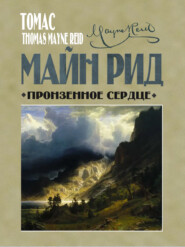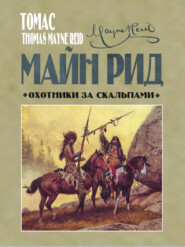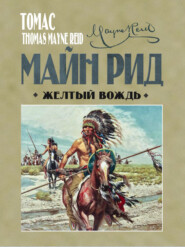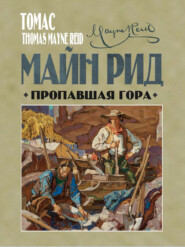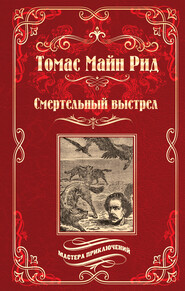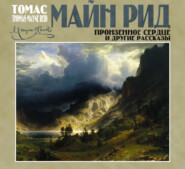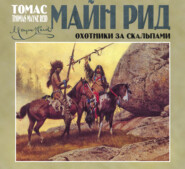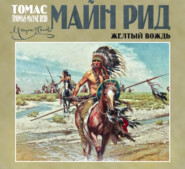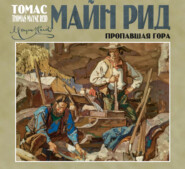По всем вопросам обращайтесь на: info@litportal.ru
(©) 2003-2024.
✖
The Plant Hunters: Adventures Among the Himalaya Mountains
Настройки чтения
Размер шрифта
Высота строк
Поля
The two remaining quarters of the venison still hung on the tree. These were permitted to remain – as a bait to the singular trap that Ossaroo was about to set – only that they were raised higher from the ground, in order that the tiger might not too readily snatch them away, and thus defeat the stratagem of the hunter.
The venison having been hung to his liking, Ossaroo now cleared the ground for a large space around – directing his assistants to carry off all the brush and dead wood to a distance from the spot. This was quickly done, and then the shikarree put the finishing stroke to his work. This occupied him for two hours at least, and consisted in anointing all the fig-leaves that had been gathered with a coat of birdlime, and spreading them over the ground, until they covered a space of many yards in circumference. In the centre of this space hung the venison; and no creature could have approached within yards of it without treading upon the smeared leaves. The leaves had been anointed upon both sides, so that they adhered slightly to the grass, and a breeze of wind could not have disarranged them to any great extent.
When all was fixed to their satisfaction, Ossaroo and the others returned to the camp-fire, and ate a hearty dinner. It was already late in the day, for they had been many hours at work, and they had not thought of dining until their arrangements were complete. Nothing more remained to be done, but to await the result of their stratagem.
Chapter Ten.
A Talk about Tigers
I need not describe a tiger. You have seen one, or the picture of one. He is the great striped cat. The large spotted ones are not tigers. They are either jaguars, or panthers, or leopards, or ounces, or cheetahs, or servals. But there is no danger of your mistaking the tiger for any other animal. He is the largest of the feline tribe – the lion alone excepted – and individual tigers have been measured as large as the biggest lion. The shaggy mane that covers the neck and shoulders of an old male lion gives him the appearance of being of greater dimensions than he really is. Skin him and he would not be larger than an old male tiger also divested of his hide.
Like the lion, the tiger varies but little in form or colour. Nature does not sport with these powerful beasts. It is only upon the meaner animals she plays off her eccentricities. The tiger may be seen with the ground-colour of a lighter or deeper yellow, and the stripes or bars more or less black; but the same general appearance is preserved, and the species can always be recognised at a glance.
The range or habitat of the tiger is more limited than that of the lion. The latter exists throughout the whole of Africa, as well as the southern half of Asia; whereas the tiger is found only in the south-eastern countries of Asia, and some of the larger islands of the Indian Archipelago. Westwardly his range does not extend to this side of the Indus river, and how far north in Asia is uncertain. Some naturalists assert that there are tigers in Asia as far north as the Obi River. This would prove the tiger to be not altogether a tropical animal, as he is generally regarded. It is certain that tigers once did inhabit the countries around the Caspian Sea. There lay Hyrcania; and several Roman writers speak of the Hyrcanian tigers. They could not have meant any of the spotted cats, – ounce, panther, or leopard, – for the Romans knew the difference between these and the striped or true tiger. If, then, the tiger was an inhabitant of those trans-Himalayan regions in the days of Augustus, it is possible it still exists there, as we have proofs of its existence in Mongolia and northern China at the present day.
Were we to believe some travellers, we should have the tiger, not only in Africa, but in America. The jaguar is the tiger (tigre) of the Spanish Americans; and the panther, leopard, and cheetah, have all done duty as “tigers” in the writings of old travellers in Africa.
The true home of this fierce creature is the hot jungle-covered country that exists in extended tracts in Hindostan, Siam, Malaya, and parts of China. There the tiger roams undisputed lord of the thicket and forest; and although the lion is also found in these countries, he is comparatively a rare animal, and, from being but seldom met with, is less talked about or feared.
We who live far away from the haunts of these great carnivora, can hardly realise the terror which is inspired by them in the countries they infest.
In many places human life is not safe; and men go out upon a journey, with the same dread of meeting a tiger, that we would have for an encounter with a mad dog. This dread is by no means founded upon mere fancies or fabricated stories. Every village has its true tales of tiger attacks and encounters, and every settlement has its list of killed or maimed. You can scarce credit such a relation; but it is a well-known fact that whole districts of fertile country have from time to time been abandoned by their inhabitants out of pure fear of the tigers and panthers which infested them! Indeed, similar cases of depopulation have occurred in South America, caused by a far less formidable wild beast – the jaguar.
In some parts of India the natives scarce attempt resistance to the attack of the tiger. Indeed, the superstition of his victims aids the fierce monster in their destruction. They regard him as being gifted with supernatural power, and sent by their gods to destroy; and under this conviction yield themselves up, without making the slightest resistance.
In other parts, where races exist possessed of more energy of character, the tiger is hunted eagerly, and various modes of killing or capturing him are practised in different districts.
Sometimes a bow is set with poisoned arrows, and a cord attached to the string. A bait is then placed on the ground, and arranged in such a way that the tiger, on approaching it, presses against the cord, sets the bow-string free, and is pierced by the arrow – the poison of which eventually causes his death.
A spring-gun is set off by a similar contrivance, and the tiger shoots himself.
The log-trap or “dead-fall” – often employed by American backwoodsmen for capturing the black bear – is also in use in India for trapping the tiger. This consists of a heavy log or beam so adjusted upon the top of another one by a prop or “trigger,” as to fall and crush whatever animal may touch the trigger. A bait is also used for this species of trap.
Hunting the tiger upon elephants is a royal sport in India, and is often followed by the Indian rajahs, and sometimes by British sportsmen – officers of the East India Company. This sport is, of course, very exciting; but there is nothing of a ruse practised in it. The hunters go armed with rifles and spears; and attended by a large number of natives, who beat the jungle and drive the game within reach of the sportsmen. Many lives are sacrificed in this dangerous sport; but those who suffer are usually the poor peasants employed as beaters; and an Indian rajah holds the lives of a score or two of his subjects as lightly as that of a tiger itself.
It is said the Chinese catch the tiger in a box-trap, which they bait simply with a looking-glass. The tiger, on approaching the looking-glass, perceives his own shadow, and mistaking it for a rival, rushes forward to the trap, frees the trigger, and is caught. It may be that the Chinese practised such a method. That part is likely enough; but it is not likely that they take many tigers in this way.
Perhaps you may be of opinion that the plan which Ossaroo was about to follow was quite as absurd as that of the Chinese. It certainly did sound very absurd to his companions, when he first told them that it was his intention to catch the tiger by birdlime!
Chapter Eleven.
A Tiger taken by Birdlime
The plan of the shikarree was put to the test sooner than any of them expected. They did not look for the tiger to return before sunset, and they had resolved to pass the night among the branches of the banyan in order to be out of the way of danger. The tiger might take it into his head to stroll into their camp; and although, under ordinary circumstances, these fierce brutes have a dread of fire, there are some of them that do not regard it, and instances have occurred of tigers making their attack upon men who were seated close to a blazing pile! Ossaroo knew of several such cases, and had, therefore, given his advice, that all of them should pass the night in the tree. It was true the tiger could easily scale the banyan if the notion occurred to him; but, unless they made some noise to attract his attention, he would not be likely to discover their whereabouts. They had taken the precaution to erect a platform of bamboos among the branches, so as to serve them for a resting-place.
After all, they were not under the necessity of resorting to this elevated roost, – at least for the purpose of passing the night there. But they occupied it for a while; and during that while they were witnesses to a scene that for singularity, and comicality as well, was equal to anything that any of them had ever beheld.
It wanted about half-an-hour of sunset, and they were all seated around the camp-fire, when a singular noise reached their ears. It was not unlike the “whirr” made by a thrashing-machine – which any one must have heard who has travelled through an agricultural district. Unlike this, however, the sound was not prolonged, but broke out at intervals, continued for a few seconds, and then was silent again.
Ossaroo was the only one of the party who, on hearing this sound, exhibited any feelings of alarm. The others were simply curious. It was an unusual sound. They wondered what was producing it – nothing more. They quite shared the alarm of the shikarree, when the latter informed them that what they heard was neither more nor less than the “purr” of a tiger!
Ossaroo communicated this information in an ominous whisper, at the same instant crouching forward towards the main trunk of the banyan, and beckoning to the others to follow him.
Without a word they obeyed the sign, and all three climbed, one after the other, up the trunk, and silently seated themselves among the branches.
By looking through the outer screen of leaves, and a little downward, they could see the quarters of venison hanging from the limb, and also the whole surface of the ground where the glittering leaves were spread.
Whether the haunch which the tiger had stolen on the preceding night had not been sufficient for his supper, and he had grown hungry again before his usual feeding-time, is uncertain. But certain it is that Ossaroo, who understood well the habits of this striped robber, did not expect him to return so soon. He looked for him after darkness should set in. But the loud “purr-r-r” that at intervals came booming through the jungle, and each time sounding more distinctly, showed that the great cat was upon the ground.
All at once they espied him coming out of the bushes, and on the other side of the rivulet – his broad whitish throat and breast shining in contrast with the dark green foliage. He was crouching just after the manner of a house-cat when making her approach to some unwary bird – his huge paws spread before him, and his long back hollowed down – a hideous and fearful object to behold. His eyes appeared to flash fire, as he bent them upon the tempting joints hanging high up upon the branch of the tree.
After reconnoitring a little, he gathered up his long back into a curve, vaulted into the air, and cleared the rivulet from bank to bank. Then, without further pause, he trotted nimbly forward, and stopped directly under the hanging joints.
Ossaroo had purposely raised the meat above its former elevation, and the lowest ends of the joints were full twelve feet from the ground. Although the tiger can bound to a very great distance in a horizontal direction, he is not so well fitted for springing vertically upwards, and therefore the tempting morsels were just beyond his reach. He seemed to be somewhat nonplussed at this – for upon his last visit he had found things rather different – but after regarding the joints for a moment or two, and uttering a loud snuff of discontent, he flattened his paws against the ground, and sprang high into air.
The attempt was a failure. He came back to the earth without having touched the meat, and expressed his dissatisfaction by an angry growl.
In another moment, he made a second spring upwards. This time, he struck one of the quarters with his paw, and sent it swinging backwards and forwards, though it had been secured too well to the branch to be in any danger of falling.
All at once, the attention of the great brute became directed to a circumstance, which seemed to puzzle him not a little. He noticed that there was something adhering to his paws. He raised one of them from the ground, and saw that two or three leaves were sticking to it. What could be the matter with the leaves, to cling to his soles in that manner? They appeared to be wet, but what of that? He had never known wet leaves stick to his feet any more than dry ones. Perhaps it was this had hindered him from springing up as high as he had intended? At all events, he did not feel quite comfortable, and he should have the leaves off before he attempted to leap again. He gave his paw a slight shake, but the leaves would not go. He shook it more violently, still the leaves adhered! He could not make it out. There was some gummy substance upon them, such as he had never met with before in all his travels. He had rambled over many a bed of fig-leaves in his day, but had never set foot upon such sticky leaves as these.
Another hard shake of the paw produced no better effect. Still stuck fast the leaves, as if they had been pitch plasters; one covering the whole surface of his foot, and others adhering to its edges. Several had even fastened themselves on his ankles. What the deuce did it all mean?
As shaking the paw was of no use, he next attempted to get rid of them by the only other means known to him; that was by rubbing them off against his cheeks and snout. He raised the paw to his ears, and drew it along the side of his head. He succeeded in getting most of them off his foot in this way, but, to his chagrin, they now adhered to his head, ears, and jaws, where they felt still more uncomfortable and annoying. These he resolved to detach, by using his paw upon them; but, instead of doing so, he only added to their number, for, on raising his foot, he found that a fresh batch of the sticky leaves had fastened upon it. He now tried the other foot, with no better effect. It, too, was covered with gummy leaves, that only became detached to fasten upon his jaws, and stick there, in spite of all his efforts to tear them off. Even some of them had got over his eyes, and already half-blinded him! But one way remained to get rid of the leaves, that had so fastened upon his head. Every time he applied his paws, it only made things worse. But there was still a way to get them off – so thought he – by rubbing his head along the ground.
No sooner thought of than done. He pressed his jaws down to the earth, and, using his hind-legs to push himself along, he rubbed hard to rid himself of the annoyance. He then turned over, and tried the same method with the other side; but, after continuing at this for some moments, he discovered he was only making matters worse; in fact, he found that both his eyes were now completely “bunged up,” and that he was perfectly blind! He felt, moreover, that his whole head, as well as his body, was now covered, even to the tip of his tail.
By this time, he had lost all patience. He thought no longer of the venison. He thought only of freeing himself from the detestable plight in which he was placed. He sprang and bounded over the ground; now rubbing his head along the surface, now scraping it with his huge paws, and ever and anon dashing himself against the stems of the trees that grew around. All this while, his growling, and howling, and screaming, filled the woods with the most hideous noises.
Up to this crisis, our travellers had watched his every movement, all of them bursting with laughter; to which, however, they dare not give utterance, lest they might spoil the sport. At length, Ossaroo knew that the time was come for something more serious than laughter; and, descending from the tree with his long spear, he beckoned the others to follow with their guns.
The shikarree could have approached and thrust the tiger, without much danger; but, to make sure, the double-barrel, already loaded with ball, was fired at him, along with Caspar’s rifle; and one of the bullets striking him between the ribs, put an end to his struggles, by laying him out upon the grass dead as a herring.
Upon examining him, they found that the fig-leaves go covered his eyes, as to render him completely blind. What prevented him from scratching them off with his huge claws was, that these were so wrapped up in the leafy envelope as to render them perfectly useless, and no longer dangerous, had any one engaged with him in close combat.
When the exciting scene was over, all of the party indulged in hearty laughter; for there was something extremely ludicrous, not only in the idea, but in the act itself, of trapping a royal tiger by so simple a contrivance as birdlime.
Chapter Twelve.
A Rare Raft
Ossaroo did not fail to skin the tiger, and to eat for his supper a large steak, cut off from his well-fleshed ribs. The others did not join him in this singular viand, although the shikarree assured them that tiger-beef was far superior to the venison of the sambur deer. There may have been truth in Ossaroo’s assertion; for it is well-known, that the flesh of several kinds of carnivorous animals is not only palatable, but delicate eating. Indeed, the delicacy of the meat does not seem at all to depend upon the food of the animal; since no creature is a more unclean feeder than the domestic pig, and what is nicer or more tender than a bit of roast pork? On the other hand, many animals, whose flesh is exceedingly bitter, feed only on fresh grass or sweet succulent roots and plants. As a proof of this, I might instance the tapir of South America, the quaggas and zebras of Africa, and even some animals of the deer and antelope tribes, whose flesh is only eatable in cases of emergency.
The same fact may be observed in relation to birds. Many birds of prey furnish a dish quite equal to choice game. For one, the flesh of the large chicken-hawk of America (eaten and eagerly sought after by the plantation negroes) is not much, if anything, inferior to that of the bird upon which it preys.
It was not for the “meat,” however, that Ossaroo stripped the tiger of his skin, but rather for the skin itself; and not so much for the absolute value of the skin, for in India that is not great. Had it been a panther or leopard skin, or even the less handsome hide of the cheetah, its absolute value would have been greater. But there was an artificial value attached to the skin of a tiger, and that well knew the shikarree. He knew that there was a bounty of ten rupees for every tiger killed, and also that to obtain this bounty it was necessary to show the skin. True it was the East India Company that paid the bounty, and only for tigers killed in their territory. This one had not been killed under the British flag, but what of that? A tiger-skin was a tiger-skin; and Ossaroo expected some day not distant to walk the streets of Calcutta; and, with this idea in his mind, he climbed up the great banyan, and hid his tiger-skin among its topmost branches, to be left there till his return from the mountains.
The next two days were spent in the same neighbourhood, and the plant-hunter was very successful. The seeds of many rare plants, some of them quite new to the botanical world, were here obtained, and like the skin of the tiger deposited in a safe place, so that the collectors might not be burdened with them on their journey to the mountains. It was in this way that Karl had resolved upon making his collections, leaving the seeds and nuts he should obtain at various places upon his route; and, when returning, he trusted to be able to employ some coolies to assist in getting them carried to Calcutta or some other sea-port.






